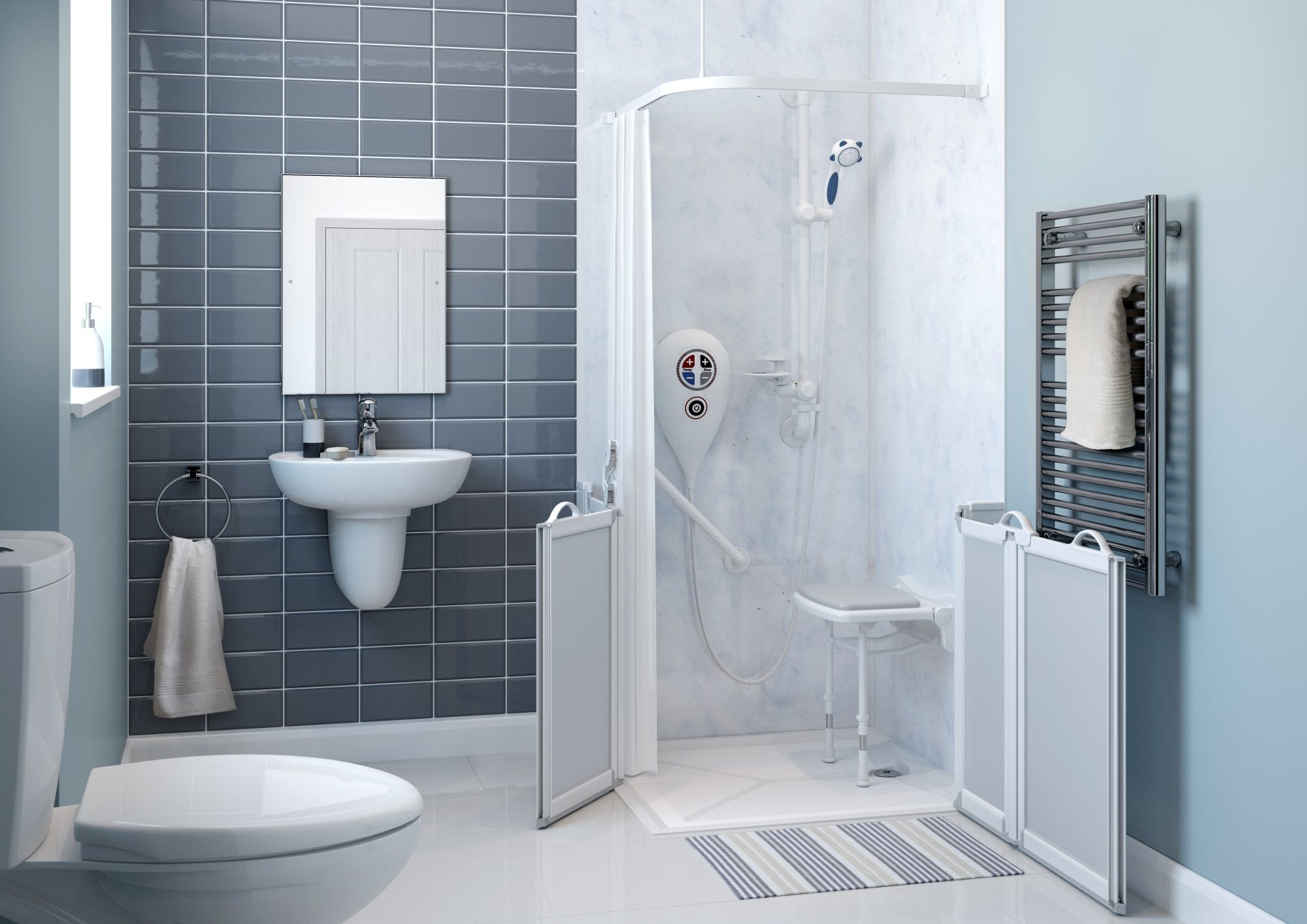How To Design An Assisted Bathroom | More Ability
Published: 11 May 2018
In the UK over 6.5 million of us are classified as a care giver. That figure will include professional working carers as well as family carers, whether parent > child care or child > parent care. Within this article we will focus on both care types from a domiciliary care point of view, usually referred to as home care, where organised routine visits from a health care assistant are required or live in care is provided, usually by a family member.
The reasons for doing so is that in any instance where domiciliary care is being provided it is anticipated it will cover the concept of assisted bathing as a result of the bathroom being a high risk and/or troublesome area.
The reason we have created this helpful ‘how to’ article is to highlight certain design elements that will form the basis of an assisted bathroom, suitable for simultaneous end user and care giver use to enhance the overall experience.
Design Planning
Planning the design of the bathroom to allow for circulation space and increased manoeuvrability forms the basis of an assisted bathroom. Doing so allows both user and care giver to comfortably and safely move around the bathroom without encountering potential risks and hazards.
An initial hurdle to overcome, and a perfect example why design planning is crucial, is a result of the vast majority of the population believing their existing bathroom is of a small stature. This preliminary point is provided to strictly focus on space. Now although, in an ideal world, recommended room size for creating an accessible, assisted, bathroom is 2.4 x 2.5m there are design tricks and tips you can use to maximise circulation space if the existing bathroom doesn’t meet the above requirements.
1. Adopt the concept of a disabled wet room, or a mobility level access shower – not only is this a perfect mobility bathroom solution it also makes use of the entire room as a result of no lips or steps meaning wheel-in, walk-in or zimmer-in access is possible.
2. Installation of a folding shower seat meaning when not in use it’s not in the way.
3. Use of bi-folding half height doors, similar to the above when not in use they can be folded away and they also provide a wide opening catering for wheel chair access. Similarly, and perfect for an assisted bathroom design, half height doors allow for a carer to leave over and assist with showering and bathing without themselves getting wet.
3. We would highly recommend accompanying the above with a shower curtain rather than a fixed patrician for the same reasons as above.
4. Similarly rise and fall grab bars, rather than fixed fittings, are preferred for the purpose of providing additional manoeuvrability space when required.
5.Purpose built shelves and niches for storage are a stylish design alternative to traditional bathroom cupboards and great for small rooms where ample floor space isn’t an option.
Being selective with your choices, and as a result of exploring all your options, proves necessary space can be created where the room dimensions don’t meet the ideal requirements.

Slip Resistant Flooring
Bathrooms can be hazardous for slips, trips and falls when there’s only one occupant at a time due to them being naturally wet environments. Add two people and potentially a walking aid and / or wheelchair present the risk of an accident occurring only increases.
For the purpose of safety and complete peace of mind the installation of safety flooring, or slip resistant vinyl, is paramount in the design of an assisted bathroom, protecting both the user and carer from any potential risk.

Specialist Sanitary Ware
Designed to help an end user remain independent, wash and dry toilets for the disabled facilitate a more dignified ablution. Although not specifically for an assisted bathroom, quite the contrary, wash and dry toilets allow for a user to continue to use with dignity and freedom.
Often referred to as the most personal of task performed in the bathroom; being able to continue to use the WC with independence and ease is a top priority for the majority of disabled users.
As well as wash and dry toilets there are also raise height toilets, height adjustable toilets and height powered toilet systems available; all designed to assist getting on and off.

Positioning of Controls
Finally, and an important design element, is the positioning of certain controls, for both ease of access and use for the end user and care giver.
An option would be to position the shower controls outside the shower area, where assisted showering is required, to allow the care giver to turn the shower on and off, as well as adjusting the temperature and flow, before the user gets in / wet. It may also be worthwhile choosing an attended hose for increased reach and flexibility.
Incorporating a number of these design features will only enhance the user and care givers bathing experience, making it easier, safer and more enjoyable for all involved. Whether an end user or a care giver if you're wanting additional information, help and advise or to book a free survey appointment and quote, a friendly member of our team is ready and waiting to help.
More Ability, part of the Passmore Group, is Yorkshires leading and most experienced bath & shower room specialist for all types of stylish, safe & practical and bespoke solutions. Offering a fully project managed design & installation service we pride ourselves on meeting individual wants, needs and aspirational requirements for both the public & private sector.
Share this Post






.jpg?auto=compress%2Cformat&cs=strip&fit=clip&h=400&ixlib=php-1.1.0&w=400&s=5214661fc25a1b3a120d8da44b0392ce)



















